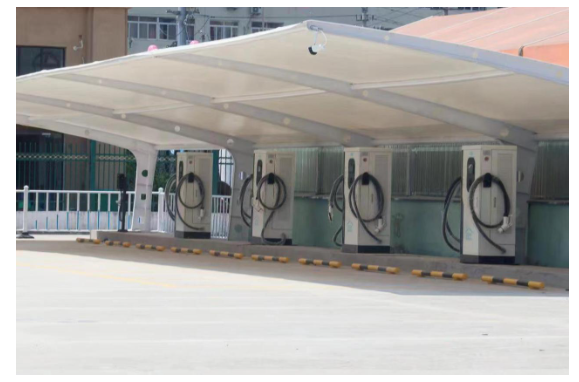
How DC EV charging works is important to current and future EV owners. This blog aims to shed light on the inner workings of DC electric vehicle charging, clarifying its mechanics and benefits. By delving into this topic, readers will gain valuable insights into the future of automotive technology.
What is EV charging?
EV charging refers to the process of providing energy to the battery of an electric vehicle (EV). The process involves using various types of charging facilities to transfer electricity from the grid into the electric vehicle’s battery pack.
Many EV charger manufacturers manufacture different types of chargers based on the power levels, charging speeds and interface standards of different charging equipment, mainly including home slow charging, public fast charging and super fast charging.
How DC EV Charging Works
The DC electric vehicle charging process involves converting alternating current (AC) from the grid into direct current (DC) and feeding it directly into the electric vehicle’s battery. This conversion process is completed outside the charging station, making charging more efficient and significantly reducing the required charging time.
DC fast chargers simplify the charging process and minimize energy loss by bypassing the on-board charger in the car and directly powering the electric vehicle battery, improving charging efficiency.
Why DC Charging is Faster
The speed of fast charging stems from its ability to circumvent certain steps involved in traditional AC charging methods. By bypassing the onboard charger present in most EVs, DC chargers can deliver power directly to the battery at a much higher rate.
Bypassing the onboard charger
Since DC fast chargers handle the conversion process externally, they eliminate any delays caused by converting AC to DC within the vehicle itself. This direct approach results in a more rapid and efficient charging experience.
Higher power transfer
Another factor contributing to faster charging speeds is the increased power transfer capability of DC chargers compared to standard home chargers. With power levels reaching up to 350 kW, these stations can provide a substantial amount of energy in a shorter timeframe.
Types of DC Fast Chargers
There are many different types of DC Fast Chargers, usually divided into the following categories:
CCS (Combined Charging System)
CCS (Combined Charging System) is a versatile charging standard that integrates both AC and DC charging. This system allows for efficient charging by combining the benefits of both types. CCS connectors are becoming increasingly popular in the industry due to their compatibility with a wide range of electric vehicles.
- The CCS standard offers a comprehensive solution for electric vehicle charging needs, supporting both slow and rapid charging capabilities.
- With CCS, electric vehicles can be charged at various speeds, making it a flexible option for different driving requirements.
- CCS connectors are designed to be user-friendly, ensuring a seamless experience for EV owners during the charging process.
CHAdeMO
CHAdeMO is another prominent fast-charging standard that has been widely adopted by electric vehicle manufacturers. This system enables rapid recharging of compatible vehicles, enhancing the overall convenience of owning an electric vehicle.
- Electric vehicles equipped with CHAdeMO connectors can benefit from high-speed charging at dedicated stations, reducing downtime significantly.
- The widespread availability of CHAdeMO chargers makes it a convenient choice for EV owners looking to charge their vehicles quickly and efficiently.
- Compatibility with various electric vehicle models makes CHAdeMO a versatile option for drivers seeking reliable fast-charging solutions.
Tesla Supercharger
The Tesla Supercharger network is renowned for its high-speed charging capabilities tailored specifically for Tesla vehicles. This proprietary system ensures that Tesla owners can recharge their vehicles swiftly at designated Supercharger stations across various locations.
- Tesla’s commitment to expanding the Supercharger network enhances the accessibility and convenience of long-distance travel for Tesla Model owners.
- The efficiency of Tesla Superchargers enables drivers to replenish their vehicle’s battery quickly, minimizing interruptions during their journeys.
- Compatibility with all Tesla vehicles eliminates the need for additional adapters or modifications when using the Supercharger network.
Fast Charging Standards
Fast charging standards can effectively improve the user experience of electric vehicles, especially in public charging infrastructure and long-distance travel scenarios. Standardization ensures the consistency, ease of use and efficiency of charging stations, while simplifying the charging process for users and promoting the popularity of electric vehicles.
Currently, multiple fast charging standards are used in the industry to adapt to different electric vehicle and technology needs. The differences in these standards ensure the compatibility of vehicles with various charging networks, requiring car manufacturers to continuously update their models to meet new technical standards and ensure that users get the best charging experience.
Conclusion
In the field of electric vehicles, DC fast charging not only supports public electric vehicle charging infrastructure, but also enables long-distance travel and meets the needs of households without home electric vehicle charging facilities.
As consumers increasingly expect electric vehicles to be serviced as seamlessly as traditional vehicles, the need for efficient charging solutions such as DC chargers has become even more apparent.

